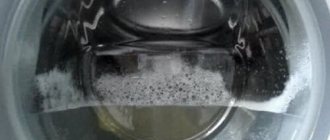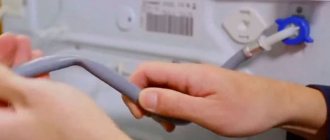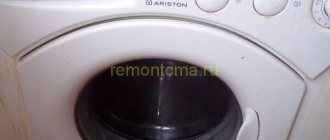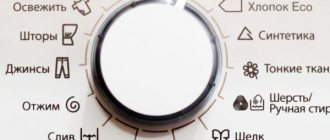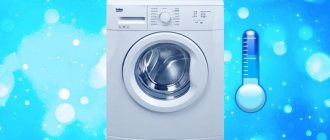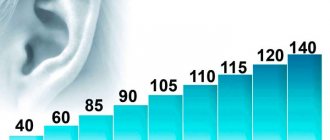You put in the laundry, set the program, pressed “start”, but you can’t hear the usual murmur of water being poured. The washing machine does not fill with water, but lights are shining. Let's figure out what to do and what the reasons are. You can call a specialist and pay for repairs if you have time and money - but if you have a little technical knowledge, simple tools and desire - you can fix the machine yourself.
The instructions are suitable for most makes and models of cars, including AEG, Bosch Maxx, Electrolux EWS, Hotpoint Ariston Margarita, Ardo, Beko, Indesit, Zanussi, Kaiser / Kaiser, LG / LG, Haier / Haer, Samsung EcoBubble / Samsung Eco Bubble, Candy / Kandy, Daewoo / Daewoo, Whirlpool / Whirlpool and other models with direct and belt drive.
First let's check
Problems with the washing program
First check the mode in which the machine operates. Try canceling the wash. If the problem does not disappear, reboot the machine by turning it off from the network for 10-15 seconds. If there was a software failure in the controller, when turned on, water will begin to accumulate.
Puddles on the floor
If puddles appear under the machine, carefully inspect it from all sides.
- The tank leaked
- The pipe inside the housing has burst or become deformed,
- The inlet hose has broken or the fitting that connects the device to the water supply has come off.
Availability of water in the tap
Then we will check if there is water in the apartment. If there is no water, but it was not turned off in the house, you may have turned off the cold water inlet tap (usually there is a meter on it).
Display messages
Some machines indicate a fault on the display. In this case, look for instructions and follow the manufacturer’s instructions. Our error, for example, is indicated by the codes:
- Ardo, Asko, Candy, Hansa, Kaiser: E02 - error when setting the water level
- Beko: H4 - the water filling valve is closed
- Bosch, Siemens: F02 - water does not enter the drum
- Electrolux, Zanussi: E11 - error when filling the tank with water (it takes too long to fill), E13 - drop in water level due to a leak
- Gorenje: F2 - water intake limit exceeded
- LG: IE - impossible to get water
- Samsung: E1 - water was filled with an error
- Whirlpool: E10 - the machine does not fill with water
- Atlant: F5 - water is drawn in and drained at the same time, the inscription "door" - the door is not closed tightly enough
If the problem cannot be solved, we begin a sequential detailed analysis.
Fault signals for popular models
If water does not flow into the machine at all, the essence of the problem is clear. But sometimes the appliance simply does not receive enough water to fully wash or rinse: we see that the drum is not empty and cannot determine the cause of the problem.
In this case, the signals from the machine itself will help, which are displayed on the display immediately or after starting the diagnostics.
In many washing machines, if the supply is insufficient or the water intake system is broken, the chemical formula of water is displayed on the display - H2O
Problem codes with water intake for some popular models:
- Asko – Water inlet fault or E01;
- Zanussi and Electrolux – E10 or E11;
- Candy – E02;
- Ariston, Hotpoint Ariston and Indesit – H2O;
- Samsung – E1;
- – PE or IE;
- Whirlpool – F01 or FH;
- Bosh - F01 or Aquastop.
If the washing machine is not equipped with a display, the causes of the malfunction will be indicated by flashing lights on the panel. This code is programmed at the factory, so its meaning depends on the specific model, and a decoding table is included in the product instructions.
Causes, diagnosis and treatment
Water fills slowly or does not flow
Check the pressure in the tap - the stream should be good, not just a trickle. If everything is fine with the pressure, we move on.
First of all, remove the top cover, turn on the machine for washing and listen to see if the water fill solenoid is working. If the characteristic sound of the electromagnet is heard, this means that the control controller has given a command to fill, the valve is working to open, but there is no water.
Close the water supply tap and carefully unscrew the hose from the fitting using the machine (preferably by hand, because it is plastic). Carefully pour water into the prepared container. If the water comes out, the tap and hose are fine. If not, look further.
The filter is clogged
Check to see if the washing machine inlet filter is clogged. If it is clogged, remove it using pliers, clean it, check the condition of the gasket, connect the hose, and turn it on. If water still does not flow, move on.
The door is not closed tightly
When you have loaded the laundry and closed the machine door, it is locked with a special lock - the hatch locking device (UBL). If you start the wash, the device tells the controller that the hatch is closed and the machine is ready for use. If there is no such command, the controller does not let water in.
To begin, tighten the hatch fastening screws and close the door, pressing the hatch tightly. If water starts to flow, the problem is the wear of the mechanical part of the fasteners. The hinges and latches need to be tightened. If it doesn't help, change the lock.
More details about UBL breakdowns:
5 ways to emergency open the washing machine door after washing
Checking the inlet valve and its windings
To check the valve, we need a multimeter with the ability to measure resistance up to 5 kOhm.
- Checking resistance. Remove the top cover of the machine. The valve is located on the opposite side of the water supply hose. Let's measure the resistance of the windings. There should be values in the range of 2.5–4 kOhm. If the instrument readings are different, the valve must be replaced.
- Checking the power supply to the valve. We turn on the machine in rinse mode and measure the voltage at the valve terminals. If there is 220 volts, then this means that the control controller gives a command to fill in water, but the solenoid does not carry it out. We change the valve. If there is no 220 volts, we continue to look for the problem in the controller (see below).
In general, if you see a burnt-out winding, it is better to immediately replace the valve: it is unlikely to be successfully repaired
The pressure switch is broken - water level sensor
The pressure switch informs the controller about the presence and amount of water in the tank. The sensor can be located in various places of the machine, most often on the inside side wall. To check, you need to disconnect the part, clean it from dust, check the integrity of the contacts and blow out the tube connecting the sensor to the machine tank. Then we connect a piece of hose and blow into it. If we hear one or three clicks, the device is working properly. If there are no clicks, replace it.
Look in more detail here:
The pressure switch in the washing machine is broken: what to do?
Pump failure
The electrical circuit of the washing machine is designed so that the operation of the fill valve depends on the functionality of the drain pump. The algorithm states: if there is no way to drain, then there is no need to pour.
There are two ways to check the pump's performance:
- Drain the remaining water through the pump filter - usually located at the bottom right. Remove the filter screen and inspect the pump. If it is clogged with wool or fibers, this is most likely the cause of the breakdown. Try cleaning the pump and starting the wash. If the problem persists, move on.
- Lay the machine on its side.
- Remove the pan (if there is one) without touching the aquastop wires. Disconnect the pump.
- Clean the pump if it is dirty.
- Inspect the pump for damage. Check the impeller for integrity and mobility.
- Check the pump with a multimeter: if the device shows 0 or infinity, the motor is faulty, the pump needs to be replaced.
The simplest option is described above. In premium cars, things may be different.
Drain connected incorrectly
If the drain is connected incorrectly, the machine cannot drain the water from the old wash and therefore does not allow you to draw a new one. Check the main rule for installing the drain: the tank must be lower than the connection of the outlet pipe to the sewer. The exception is only for models with a check valve, which prevents waste water from returning back.
Such a malfunction is usually accompanied by the hum of the electric motor, which cannot develop the pressure specified by the program.
For more details, see the washing machine installation instructions and other articles:
Step-by-step instructions for connecting any washing machine
We fix 15 main problems with washing machines with our own hands
Failure of the hitchhiker on the hose
Some washing machines are equipped with aquastop - the AquaStop system, which protects against hose leaks. It can be distinguished by the thickening of the hose in two places: at the connection to the water supply and near the pan.
Open the back cover and inspect the tray. If there is water in it, it means that the tank, the system for filling and supplying detergents, or the drain has leaked. Finding leaks will require a deeper disassembly of the entire machine and examination of its components.
If the sump is dry, most likely the autostop was accidentally activated - for example, if a float is stuck in the sump or the valve on the hose is broken. We look at the performance of the float and check the valve on the hose with a multimeter. If the module burns out, replace it.
Wiring damage
If the machine has been used for a long time, the wiring may be damaged - the wires have dried out, the contacts have fallen off due to vibration, or animals have chewed the wire. Both the power and signal parts of the wiring are susceptible to damage. These faults affect the performance of the control controller.
You need to check the electrical wiring when the machine is disconnected from the network. Check all wires and connections, replace defective ones, turn on the machine and check operation.
The programmer or control module is faulty
The management controller is the board or block at the top of the front panel. Usually they are replaced entirely; only specialists from the service center can repair them properly.
On your own, at home, you can only replace the control unit with a new one. We take the type and marking of the machine, put it on the Internet, and select a complete analogue. Take a photo of yours and send it to the seller. Get an answer with a guarantee of a complete match.
If possible, buy for pickup. It won’t work - there is a low chance of returning it: spare parts stores only work with verified buyers with confirmed qualifications for returns, so we don’t recommend it.
What to do if a new washing machine does not fill with water
Have you recently installed a washing machine and during the first wash the water does not flow into the tank? Don’t worry, most likely it’s due to an external reason from the list at the beginning of the article:
- no water;
- the valve is closed;
- the hose is kinked;
- the hatch door is not tightly closed.
Check everything in order, and the machine will most likely work fine. Defects leading to breakdowns are extremely rare in a new washing machine.
Have you noticed that the washer doesn’t take up water at all? Call us at Wash Man! Repair within 24 hours after request, warranty on work and spare parts for 2 years.
We wish your equipment health!
Hatch locking device
The washing machine will not begin the process of filling water if the hatch door is not closed tightly or its lock is faulty. The door may not lock in the closed position for two reasons. First: the locking tongue or hook is skewed and does not fit into the lock. This malfunction occurs when a metal rod inside the door falls out. Second: the hatch itself was skewed due to the loosening of the hinges on which the door is attached. In these cases, it is necessary to tighten the fastening or replace the rod. Also, after a long period of use, the thermal blocking strips may wear out. There is no way to do this without professional intervention.
Call the master
If you have no experience in repairing household appliances, it is better to entrust this work to a specialist. On the Internet you can find many advertisements from craftsmen offering their services. It is better to choose an expert who has many positive reviews or cooperates with a service center.
The cost of repair depends on which part needs replacement:
- replacement of the water supply valve – 1100 rubles;
- flashing or replacing the control module – from 1,500 rubles;
- replacement of the pressure switch – from 1300 rubles;
- replacement of the hatch locking device – from 1400 rubles.
Water level sensor (pressostat)
Another reason for water not filling is a breakdown of the pressure sensor (pressure switch). It controls the amount of water supplied, and in the event of a malfunction, the washing machine cannot measure the amount of liquid, and without this, the wash will not start. You can test it in one simple way. The water supply hose is disconnected, and a piece of tube of suitable size is placed in its place. Blow into it, and if you hear the springs switching clicks (usually three times), then you need to look for the problem elsewhere.
How to avoid problems with a Samsung machine in the future?
In order to forget about the problem of water intake for a long time or forever, you need to remember the provoking factors. It is important to avoid them when using a Samsung washing machine.
The problem can be caused by:
- Increased humidity in the room where the household appliance is installed. This leads to dampness and disruption of contacts. The room must have good ventilation and be heated.
- Sudden changes in voltage. Due to such electrical failures, the board may burn out. For protection, it is recommended to install special modular-type voltage relays in the house or connect the SMA through a stabilizer.
- Worn electrical cord, plug or socket. It is necessary to ensure that the equipment that supplies power to the washing machine is always in good condition.
Electronic module
The most unpleasant situation when water is not poured into the washing machine is a malfunction of the “brain” of the washing machine - the control electronic module. It can be completely electronic or combined with a specialized programmer. To repair this element, it is best to contact a service center. If you are not an electronics specialist, you should not attempt to repair it, otherwise you will only make the situation worse. A complete replacement of the board is only required in a small number of cases where it appears that the board has been seriously burned. If the damage is minor, then you can try to cope on your own. Again, this should only be done if you are familiar with electronics and know how to handle the tools and equipment needed for repairs. But even here it is not always possible to cope on your own, because sometimes it is necessary to use special stands that simulate the functioning of a washing machine. The most common fuses in the electronic module are blown. A little less often - varistors, transistors, triacs and capacitors. Dismantling of elements is carried out using a soldering hair dryer. It should be used very carefully to avoid disconnecting adjacent parts on the chip. In accordance with the diagram, you can determine the part needed for replacement. Schematic diagrams of the electronics of the device are indicated in the user manuals. Also, diagrams of most models can be found on the Internet. It is better to purchase original parts. This reduces the likelihood of repeated breakdowns after the first use of the repaired unit. If the carbon deposits on the elements are not too strong, you can risk injecting liquid to clean the contacts with a syringe. There is a possibility that their conductivity will be restored after this.
If the board is visually clean, but the washing machine does not fill with water and displays an error about a problem in the control module, then debugging the device software is necessary. It is impossible to carry out such an operation at home. For this purpose, a special device is required - a programmer, with the help of which the new “firmware” of the washing machine is installed.


